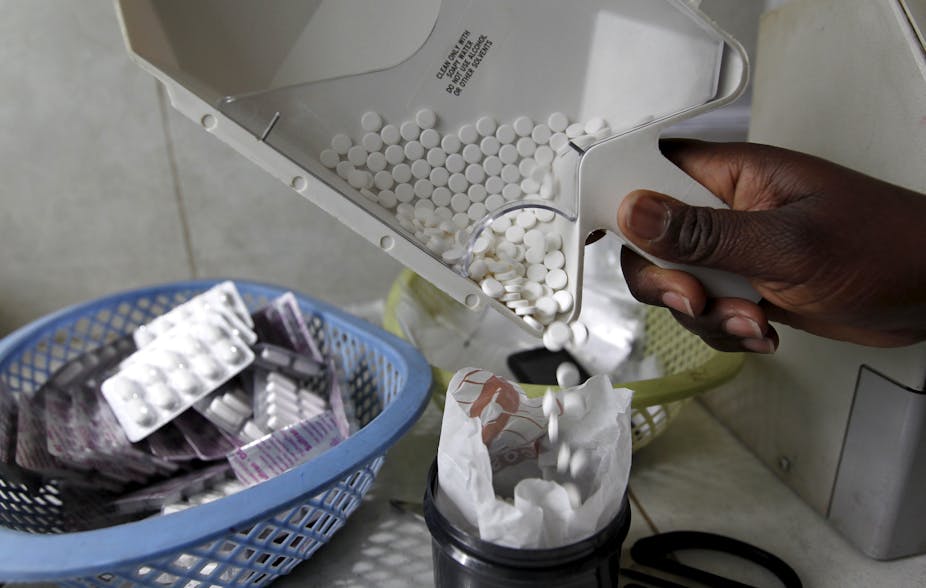The World Health Organisation (WHO) has clear markers on the road to controlling the global HIV/AIDS pandemic. By 2020, about nine out of every ten people should know their HIV status. Nine out of ten HIV positive people should be on antiretroviral treatment (ARVs) and the virus should not be detectable in their blood.
And by 2030, the WHO says, there should be no new infections, no AIDS-related deaths and no stigma or discrimination related to the virus.
These are all good goals and important ways to measure how countries are progressing. In Kenya, where I live and conduct my research, there has been some progress, but more must be done. We see progress in reducing new infections among adults, providing preventive medication and providing oral self-testing for HIV.
But more must be done to reduce new infections among adolescent girls and young women, female sex workers and men who have sex with men.
Fewer new infections, more people on treatment
Kenya’s latest HIV progress report shows that new infections are dropping.
There were 40% more people on antiretroviral treatment in 2017 than there were four years ago. Antiretroviral treatment prevents the virus from multiplying and prolongs the lives of HIV positive people. It also lowers the risk of transmission from HIV positive to HIV negative people.
Currently, 66% of the 1.5 million people living with HIV in Kenya are on antiretroviral treatment. The goal is to have at least 90% on treatment by 2020.
This strategy is based on WHO recommendations, which call for a person to start treatment immediately after testing positive. Previously it was recommended that people start ARVs only after their CD4 cells (blood cells which fight infection) dropped below 500 cells per cubic millimetre of blood.
HIV self-testing strategy
One of the biggest changes in Kenya’s strategy this year was the introduction of guidelines for oral HIV self-testing.
People can test themselves for HIV using their saliva. In most African countries, self-testing is mostly used for research. Kenya is the first country to introduce a plan to make it available nationally. The aim is to increase the number of people getting tested and link those who are HIV positive to care and treatment.
The self-testing kits became available in public and private health facilities and in some pharmacies countrywide from July and could be bought at subsidised prices. They will help fill a gap in HIV testing. The number of Kenyan adults who have ever tested for HIV has grown between 2008 and 2016, from roughly a quarter of adults to more than half.
But certain populations, such as men who have sex with men, sex workers and adolescents, have low testing rates. This is mostly because they may experience stigma and discrimination when seeking routine HIV services.
Self-testing is a way to avoid stigma and discrimination and boost people’s links to care.
But the process has some problems, including the absence of counselling before and after testing. Without good counselling, people who test positive may not seek treatment and care. This can be solved by community health volunteers following up at people’s homes. They already support family planning, maternal health and child health and can help people who use the kit and test positive.
Preventive medicine
Kenya also launched guidelines on the use of pre-exposure prophylaxis (PrEP). This comes in several forms, including vaginal rings and gels. The most common is a tablet taken daily.
PrEP is given to people in high-risk groups who are HIV negative to prevent them from contracting the virus. They may be in relationships where one partner is infected with HIV and the other is not. Others at high risk are male and female sex workers.
Kenya and South Africa are the only countries in Africa that offer this type of treatment as part of a national HIV prevention strategy.
On alert for infections among youth
Kenya also started paying more attention to young people. More than half of the world’s new HIV infections are in the group aged between 15 and 24.
In Kenya, too, 51% of new adult HIV infections were in this age group by 2016 – a steep increase from 29% in 2013. It is also the only age group in Kenya that has recorded an increase in new infections. This is because young people tend to have little knowledge about the virus and the behaviours that increase their chances of infection.
People in this age group often have sex while under the influence of alcohol, which can result in poor decisions. Girls in this age group also have transactional sex with older men.
Looking ahead
Kenya has made great strides against HIV and in providing care to all HIV infected people. But more work is needed.
The country must step up its efforts to get more men tested. It will also be important to get more adolescents and young girls to adopt HIV prevention methods, and to reduce stigma and discrimination among sex workers and men who have sex with men.

